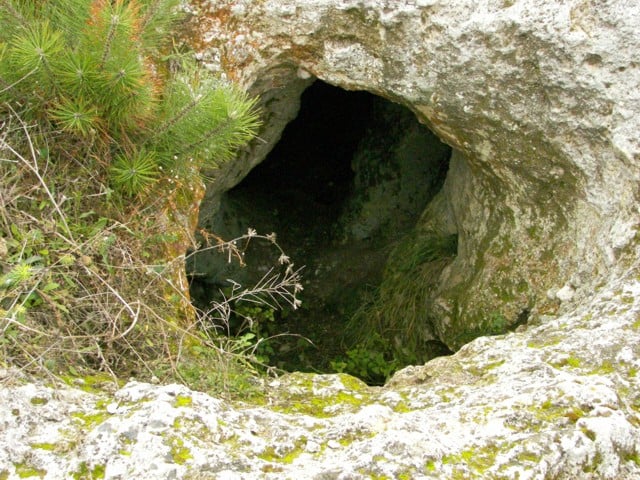“Karangil” Cave
“Karangil” cave is located in the limestone massif under the “Hisar” fortress, 15 minutes walk from the center of the village of Shiroko Pole. Formed in limestone rocks, three-story, inhabited by various types of bats and the world’s only spider «Centromerusmilleri». Its length is 490 m; elevation: +15 m; altitude: 340 m. It is a three-story and dry cave, the longest in the Eastern Rhodopes. The first floor is 180 m long. It is entered from two vertical entrances, which are relatively narrow. More than 40 years ago the first floor was flooded, but over time the water seeped in and disappeared. Not far from it is the largest hall of the cave.
It used to be the bottom of an underground lake, but during the construction of the nearby fountain, the water seeped through and now the bottom is dry. The second floor can be reached after overcoming a 10-meter chimney with the help of a rope or a ladder. It is located above the first floor and measures over 65 m in length and 2 m in average height. The floor is covered with rock debris and bat guano. The first and second floors are inhabited by a bat colony. The third floor is difficult to reach, even with alpine equipment.
History
Ceramic fragments from the Early Bronze Age were found on the floor of the third floor. Coins from the time of the Roman emperors Septimius Severus and Gordian II were found near the current entrance. There is a danger of rock falls and landslides. The third floor is reached through a five-meter narrow chimney. There are draperies (curtains), stalactites, and stalagmites on the walls and ceiling. The cave is in a layer of very soft limestone, in some places, there are landslides of earth and stones, which limit access to some of the previously passable galleries.
Fauna
Eleven species of invertebrates were found, the most interesting of which is the spider “Centromerus milleri”, the centipede “Rhodopiella beroni” and the beetles “Bureschiana drenskii” and “Laemostenus cimmerius”. The caves are home to two species of horseshoe bats, great night bats (M. bly thii/ myotis) and long-winged bats.
The cave is not suitable for visiting in winter. Read more…

